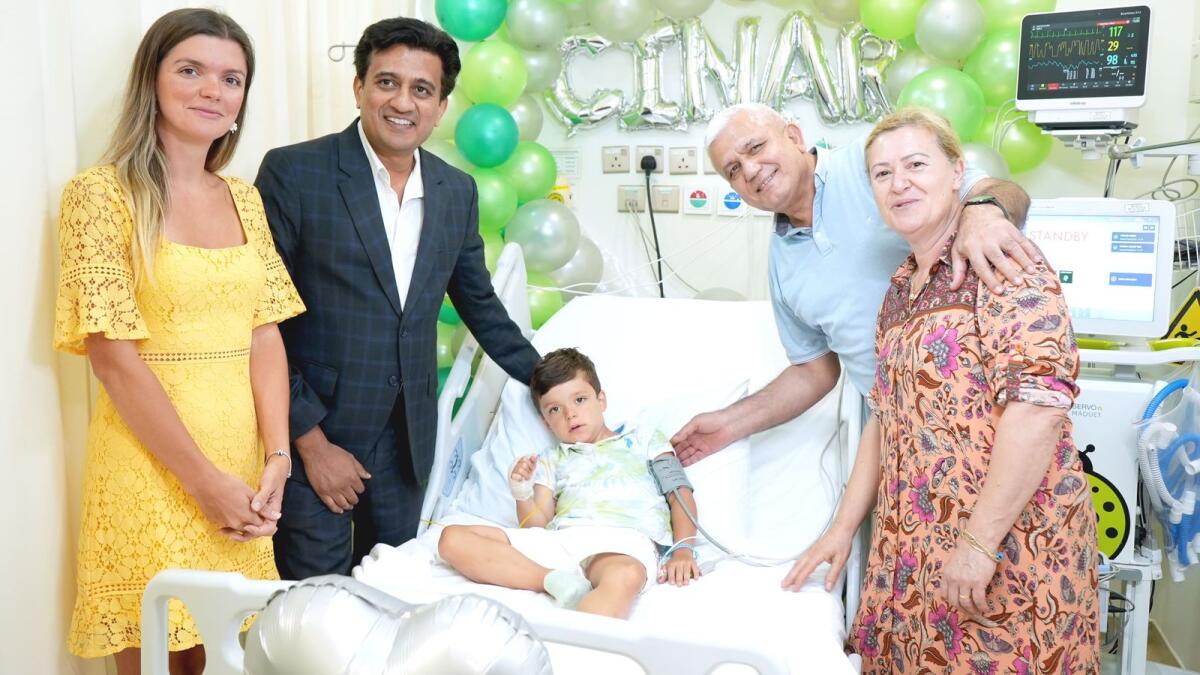A six-year-old boy, Cinar Atar, was successfully treated for Duchenne Muscular Dystrophy (DMD), a rare and severe genetic disorder that causes muscle degeneration. The treatment, costing Dh10.6 million, involved gene therapy, which is among the most expensive life-saving therapies in the world. The therapy, approved by the US Food and Drug Administration (FDA), is only available in a few countries, including the UAE.
Atar was diagnosed with DMD at the age of four in Turkey, prompting his family to seek treatment in Dubai. Dr. Vivek Mundada, a specialist pediatric neurologist, oversaw Atar’s treatment at Medcare Women and Children Hospital. DMD is caused by mutations in the dystrophin gene, leading to muscle weakening and typically affecting boys at a young age. Treatment options in Turkey were limited, and the family turned to physiotherapy and swimming to support Atar’s muscle development.
The gene therapy involves a one-time administration of a shortened version of the dystrophin gene, known as micro-dystrophin, into the bloodstream of the affected individual. This genetic fragment helps produce a functional dystrophin protein to strengthen the muscles. Post-infusion monitoring includes weekly blood tests, physiotherapy, and rehabilitation to track any improvements. Patients may receive steroids to minimize side effects.
Dr. Mundada emphasized that the therapy aims to change the natural course of the disease and prevent further muscle degeneration. While the hereditary defect causing DMD remains unchanged, the therapy helps maintain muscle integrity and prevent further degeneration. The treatment has shown mild improvement in Atar’s strength, and there have been no reported side effects so far.
The therapy is a ray of hope for children with DMD, as it offers a potential solution to slow down the progression of the condition and improve muscle function. With ongoing monitoring and follow-ups with healthcare providers, patients can track their progress and ensure the therapy’s effectiveness. By delivering a missing gene into muscle cells, the therapy allows cells to generate the essential protein, micro-dystrophin, to maintain muscle integrity.
Despite the high cost of the gene therapy, the successful treatment of Atar serves as a testament to the advancements in medical science and the potential for life-changing interventions. As more countries and medical facilities adopt this therapy, individuals with genetic disorders like DMD can hope for a better quality of life and improved outcomes. With continued research and development, gene therapies have the potential to revolutionize the treatment of rare genetic conditions and offer new possibilities for patients and their families.











